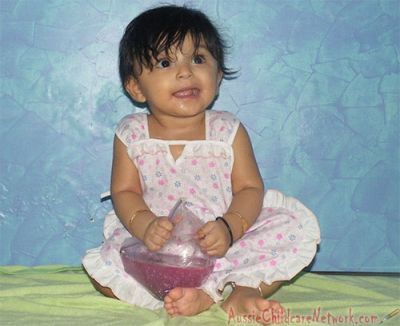A touchy feely sensory activity for baby without the mess.
Materials Needed:
- Variety of sensory materials: such as oil and water, mud, raw rice and lentils, water, hair gel, sand, paint, shaving cream etc.
- Zip lock Bags (sandwich bags) for each sensory material.
- Super glue/masking tape(you can buy coloured masking tape).
What to do:
- Fill a zip lock bag halfway with your chosen sensory material.
- Glue the bag closed.
- Tape over the glued opening. Set it to dry.
- Tape over the glued opening with masking tape.
- Place the sensory bag in front of baby and encourage them to explore it.
- Encourage your child to feel, touch and manipulate their sensory bag.
Hints and Tips:
- Mix up some sensory materials for your child to explore. For e.g. add glitter to water, add some small shells with the sand, add drops of food colouring to the hair gel or sand and encourage your child to mix it all together. No sharp objects which could pierce through the plastic.
- Make a few of these sensory bags and set them aside. Use them when your child is getting unsettled or for a quiet activity.
- Create themed sensory bags , For example: insects- add insect figurines with hair gel, add green food colouring to hair gel.
